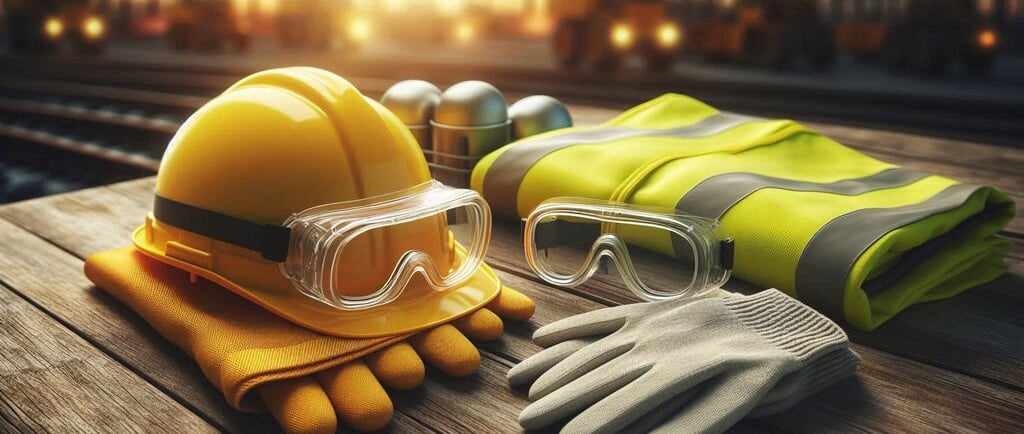Let us collaborate to foster global growth and development together.
Health & Safety Equipment
Discover the importance of health and safety equipment in various industries. Learn how the right tools protect workers and ensure a safer environment for all.
11/16/20074 min read


Discover the importance of health and safety equipment in various industries. Learn how the right tools protect workers and ensure a safer environment for all.
Health & Safety Equipment: Essential Tools for a Safer Workplace
Health and safety equipment plays a crucial role in protecting employees and workers across a wide range of industries. From the construction sector to healthcare settings, ensuring that the right gear is available can prevent injuries, save lives, and improve overall well-being. In this article, we’ll dive deep into the various types of health and safety equipment, their importance, and how to choose the best options for your workplace.
What Is Health & Safety Equipment?
Health & safety equipment refers to personal protective equipment (PPE), tools, and devices that safeguard workers from potential hazards. These risks can vary depending on the job environment, from airborne contaminants and physical injury to the potential for hazardous material exposure.
Categories of Health & Safety Equipment:
Personal Protective Equipment (PPE): Includes items like helmets, gloves, face shields, and goggles.
Ergonomic Tools: Equipment designed to reduce strain and improve comfort for workers, such as adjustable chairs and tools that minimize repetitive motions.
First Aid Supplies: Items such as bandages, antiseptic wipes, and defibrillators essential for immediate care.
The use of health and safety equipment ensures that employees are protected from workplace injuries, accidents, or diseases, boosting both safety and productivity.
Why Is Health & Safety Equipment Important?
1. Prevents Workplace Injuries
Workplace accidents can happen in any industry, from construction to offices. Safety equipment like helmets, gloves, and reflective vests mitigate these risks, providing critical protection in potentially dangerous scenarios.
Example: Hard hats are essential in construction zones to protect against falling objects, preventing head injuries that could be catastrophic.
Example: Safety gloves can shield workers from cuts, burns, and chemicals that pose potential risks, depending on the worksite.
2. Compliance with Regulations
Many industries are regulated by strict safety standards, such as those outlined by OSHA (Occupational Safety and Health Administration) in the United States. Compliance with these rules not only protects workers but also helps businesses avoid costly fines and legal issues.
3. Improved Worker Confidence and Productivity
When workers feel secure, they can focus on their tasks, knowing that safety measures are in place. This can lead to better productivity, lower downtime from injuries, and fewer accidents on the job.
Common Types of Health & Safety Equipment
1. Personal Protective Equipment (PPE)
PPE is probably the most well-known category of health and safety equipment. Whether it’s for face protection, body coverage, or hand protection, PPE ensures workers are shielded from harm. Here are some essential types:
Helmets: Often used in construction or high-risk environments, helmets provide head protection against falling objects or collisions.
Respirators and Masks: Respirators, such as N95 masks, are designed to filter harmful airborne particles, protecting workers from toxic substances.
Gloves and Safety Footwear: For tasks that involve handling chemicals or heavy machinery, proper gloves and durable footwear are critical.
Eye and Face Protection: Safety goggles or face shields protect against harmful chemicals, particles, or potential impact risks.
2. Ergonomic Safety Equipment
Ergonomically designed equipment plays a role in maintaining physical health in workplaces that involve long hours or repetitive tasks. These tools reduce strain, promote posture health, and help minimize discomfort.
Adjustable Workstations: Offer employees the flexibility to change positions, reducing fatigue.
Ergonomic Chairs and Tools: Reduce stress on muscles and joints during physically demanding tasks, helping to avoid long-term injuries like carpal tunnel syndrome.
3. First Aid and Emergency Kits
Having a well-stocked first aid kit is crucial for any workplace. In the event of an injury or emergency, fast access to medical tools can be a lifesaver. Common items include:
Bandages and Gauze
Sterilized Dressings and Antiseptic Creams
Defibrillators (AEDs) for Heart Emergencies
Proper training in emergency care should accompany access to these supplies to ensure timely and effective responses.
How to Choose the Right Health & Safety Equipment?
1. Assessing Workplace Hazards
Before choosing equipment, a thorough risk assessment should be performed. Identify potential risks in the environment, such as exposure to chemicals, electrical hazards, or the likelihood of physical injury.
For example, if working near electrical sources, insulated gloves and face shields are required.
In healthcare settings, gloves, masks, and gowns will be necessary to protect against viral infections and bodily fluids.
2. Ensure Comfort and Fit
Properly fitting equipment is more likely to be used consistently and correctly. Workers should have the right size gear that fits comfortably, minimizing distractions and discomfort. If equipment is too heavy, poorly fitted, or not breathable, it may be neglected. Always invest in high-quality gear that balances safety and comfort.
3. Regular Maintenance and Training
Having the right tools is only half the battle. Equipment must be regularly checked for wear and tear, and workers should be trained on how to use it correctly. Proper training ensures that employees know when and how to wear protective equipment and respond to emergencies effectively.
Benefits of Health & Safety Equipment
Protects workers' health, reducing injuries or illnesses related to the workplace.
Boosts employee morale and satisfaction, leading to a happier, more productive workforce.
Reduces absenteeism due to work-related injuries, contributing to higher operational efficiency.
Conclusion: Invest in Health & Safety Equipment for a Safer Tomorrow
Prioritizing health & safety equipment is an essential investment in both your workers’ well-being and your business success. By choosing the right protective gear, businesses can prevent accidents, ensure regulatory compliance, and foster a safer, more productive work environment.
Remember: Regularly assessing risks, using proper equipment, and training staff are all part of maintaining a safer workplace. Curious about how specific health & safety equipment can benefit your workplace? Feel free to leave a comment or check out more related articles for deeper insights!
Innovation
Cutting-edge solutions for industrial efficiency and productivity.
© 2024. All rights reserved.


